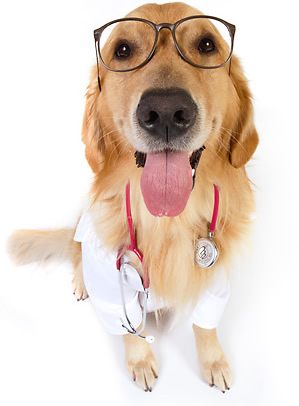Advice on Administering Medicine to Dogs
Most drug companies nowadays prepare tablets in a palatable form and are readily taken as a dog medicine. However, sometimes it takes a bit more convincing to get your dog to take its medicine! There are several ways in which you can do this.
How do I administer tablets to my dog?
Hiding the tablet in something nice often works. You can use soft dog treats with holes in them for example, or some tinned dog food or pate. Soft cheese or peanut butter may work for some dogs. Check, if necessary, whether this type of food is suitable for your dog.
If all this fails, you will have to actually push the tablets into your dog’s mouth. To do this, you place one hand over the muzzle and gently introduce your thumb and forefinger into the mouth by pushing the lips inwards just behind the canine teeth. You can even try to put some pressure onto the hard palate as this will help to keep the mouth opened. The other hand is then used to further open the mouth by pushing the lower jaw down and putting the tablet as far into the mouth or throat as possible. After closing the mouth, gently stroke the throat to induce swallowing. In some cases it may be advisable to give some water afterwards to help the dog to swallow.
Some tablets can be crushed and put into food. The vet can tell you if this is possible with the tablets supplied. There are special tablet crushers available to this purpose. If you have not got access to these, you can crush a tablet with the back of a spoon for instance.
Some dog medicines now come as liquids that can be given by mouth rather than as tablets or capsules. Examples are some antibiotics, anti-inflammatories or treatment for urinary incontinence.
How do I administer a liquid medicine to my dog?
Some liquids can be mixed with food. If you do this, make sure that the dog has eaten all of the medication. It is best to give the liquid medication in a small amount of food and only give the remainder if the dog has eaten all the food with the drug in it.
If your dog will not eat its food with the medication mixed in, you can apply the drug directly into the mouth of your dog. To do this, the easiest way is to use a syringe, which you can get from the vet. Draw up the required dose from the bottle, approach your dog from behind, gently hold your dog and place the nozzle of the syringe in between the lips of the dog from the side while holding the dog’s head steady and slightly lifted upwards. Gently squirt the medication into the mouth and if necessary rub the dog’s throat to induce swallowing. Have someone help you if the dog does not hold its head still.
As a dog owner you will rarely have to inject your own dog. Most conditions are treated with tablets, capsules, fluids, creams and ointments or drops. The vet will often start a course of treatment by injecting a drug though. The only condition in which you, as an owner, will be required to inject your own dog on a regular basis is Diabetes Mellitus.
Will I have to administer injections to my dog?
Injections can be given by different routes. You will normally be trained, by a member of the veterinary practice, to inject your own dog by the ‘subcutaneous’ route, which means the drug is administered under the skin through the needle. The injection can be given in several areas on the body but the most common one is in the neck or scruff of the dog. It is done by lifting a fold of skin lightly from the underlying tissue with one hand, while holding the syringe, like a pencil, in the other hand. The needle is directed towards the skin fold under an angle of approximately 45*. The needle is pushed through the skin by putting pressure on the syringe barrel rather than the plunger itself. After the needle has penetrated the skin, the plunger is depressed to empty the syringe. The whole syringe is then withdrawn and the area of applidogion is rubbed lightly.
The injection should not be painful to the dog. The tissue under the skin is not very sensitive and the needles used are very sharp and thin. Most dogs will not notice the injection at all. Sometimes you can take the dog’s mind off the injection by giving some food at the same time. Ask the vet if this is possible in your dog’s case. You may have to ask someone to hold the dog while you give the injection.
Some dogs may object to the application of creams etc. if the skin is very sensitive or painful. Have somebody hold the dog if he is likely to object or escape! In some cases you are advised to wear gloves when handling the medication. It is important that you take this advice to heart!
How do I apply creams, ointments and lotions?
In general these medications are applied by gently spreading the cream onto the skin. Some need massaging into the skin, others do not. Try to always apply these forms of medication to a dry skin.
What if my dog keeps licking them?
If your dog tends to lick the area of application there are several things you can try. Firstly, apply the cream just before giving the dog its food or just before taking him for a walk. This way, he will have something else on its mind then licking the cream off! Secondly, you can try fitting an Elizabethan/buster collar to your dog to prevent the dog reaching the treated area of skin. Not all dogs will be happy wearing these collars, but most accept it quite quickly. Thirdly, you can cover the skin with a bandage or boot if it is a foot. This is not always failsafe and it is not easy to apply a bandage without making it too tight or too loose. If the affected area of skin is on the body of the dog you may try putting an old T-shirt on your dog. Finally, in some cases the only solution is to muzzle the dog while the cream takes effect.

